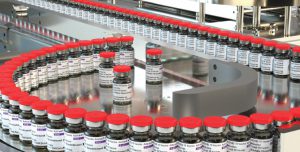The technology-led transformation has always been an area of interest for businesses in varied forms. Even though COVID-19 pandemic even though has disrupted our understanding of business operations, planning and execution have also opened a window of opportunity for willingness. It is leading to the adoption of Industry 4.0 and harnesses the power of technology-led transformation as slowly but surely businesses look to resume operations in the new normal.
In the pre-COVID era Industry, 4.0 was perceived as a “Good to Have” capability since it focused on innovation, sustainability, competitive advantage, productivity and cost reduction aspirations of the business, however it was considered as part of the future expansion and growth plans. The insights delivered were used to improve efficiency, deliver new products, streamline supply chains and create business models to grow and expand.
With the impact that the pandemic has had on profit margins and the existence of businesses at core industry, 4.0 is now perceived as “Need to Have” to help them tide over the volatility and exist in survival and revival mode. Manufacturing enterprises that were ahead in their technology-led transformation journey than their peers are now set to realize the true benefits as they resume operations.
How Can Enterprises Kickstart their Digital Manufacturing Journey?
It can be daunting for decision-makers across enterprises to know from where and how to start their digital manufacturing journey, what scope and scale should the technology adoption be implemented at and how to justify the importance and relevance to succeed.
To achieve the above, the top floor needs to visit the shop floor and get up and close with the ground reality. They should deep-dive into the production journey to identify the need in every stage including unproductive activities which can save the effort, time and resources. A fresh perspective on checks & measures to improve the quality and current use of automation to improve productivity can expose gaps that may need to be addressed.
The natural progression of the above would create a blueprint of which areas would benefit from the technology-led transformation which would require minimal effort but has the potential to create a large impact. This activity can be done by utilising internal resources who understand the processes and the business objectives well or with the help of external consultants bringing industry knowledge. This activity while may require reasonably good effort, commitment and faith from the management but has huge potential for impact both commercially & creating a reputation of being at the forefront of harnessing technology to grow.
To eliminate apprehensions and gain confidence across the spectrum i.e. management and workforce whose ways of working and processes stand to altered with the adoption of technology start with a POC(Proof Of Concept) or a pilot with clear expectations defined on output, extended plan to implement in the entire plant.
What should be the approach for technology adoption?
There is no hard & fast rule on the approach to technology for digital manufacturing.
1. If your need is a real-time system, then you must plan for on-premise server or edge computing, else you can go for cloud deployment.
2. If you have new generation machines, then go for Euromap / OPC / any standard interface to capture the data else, you may have to write specifically for your equipment.
3. If you have to integrate one system, then you can simply use API or custom interface. If you are to integrate multiple systems like ERP, MES, PLM, APS, etc, then go for systems like KAFKA, NIFI, TIBCO data virtualisation
In conclusion, there is no one size fix-all solution, the path ahead is to be decided after correctly identifying the need, your existing systems and the objective that the business expects to achieve using by on-boarding next-gen technologies.
How to put the plan into place?
It is advisable to plan and build the system layer by layer by adopting the Things, Data, People and Process. First, plan to connect the ‘things’ i.e machines, which results in the creation of a connected factory and starts generating volumes of data. This can be used to reduce the unproductive activities like production log-books, manual order communications and manual downtime recordings. The second stage should be to focus on analysing the data and insights from the connected machines to improvise the ‘process’ and the ‘people’ resulting in the creation of connected manpower, connected processes and this results in error-proofing, reduction in rejections. The last stage would be to move to the creation of connected material which gives real-time visibility of WIP, implement lean systems. A clear thought of connecting analytics in every layer to give different visualisations and recommendations will result in predictions for machines, material, quality, etc
About the Author:

Mr. Cheruvu Krishna – Associate Vice President
Heading Automation practice in Motherson Technology Services, having 25+ years of hands on experience in complete project life cycle of automation projects, which includes the hardware designing, interfaces, MES, IoT applications, process mapping, & implementation. Highly skilled in implementing machine & time critical automation projects across the globe.
Industry 4.0 based flagship product iDACS development is one of the key achievement in the automation journey. Built on more practical use cases, challenges to solve in manufacturing industry is the key approach of iDACS.















































